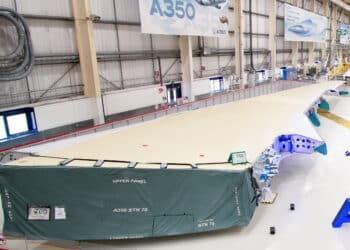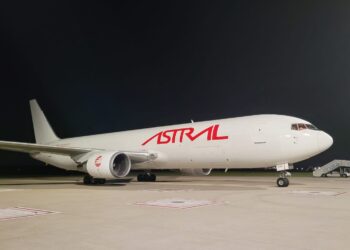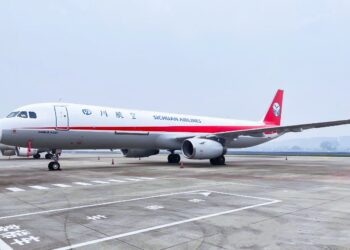Part III: The changing landscape of freighter aircraft leasing

On Monday, we began a multi-part series on freighter aircraft leasing which began with a look at the way in which a business that was originally fairly straightforward has become increasingly complex – you can see that discussion here. Yesterday, we continued with a closer look at the lessors themselves (see part II). while today we will look at how the freighter-leasing business has changed since our first study in 2016. Tomorrow we will conclude with a look at leased carrier portfolios.
Before looking at what the changes in the freighter portfolios of lessors over the last twelve months tell us about the freighter leasing market, we start with a look at the three main types of aircraft lease in use today.
Dry lease: This is the classic leasing agreement, in which a lessor provides an aircraft to an airline (the lessee). Just an aircraft. The airline is then responsible for putting that aircraft on its own operating certificate, providing crew and ground staff, and insuring, maintaining, and fueling the aircraft. Dry leases are usually long term – usually at least five years and sometimes as long as fifteen years, with a fixed monthly fee.
ACMI lease: “ACMI,” an acronym for Aircraft, Crew, Maintenance, and Insurance, is used to describe a lease arrangement that might be thought of as an extended charter agreement. The lessor in this case is an airline which provides not only an aircraft, but also the crew, and operates the aircraft itself (on its own certificate) on behalf of the lessee – which may be another airline, but, as is increasingly the case in the air freight world, a forwarder or charter broker. The lessor is also responsible for maintaining and insuring the aircraft, while the lessee is responsible for filling the plane with freight, determining routes and schedules, and for operating expenses such as ground handling, landing fees, and fuel. ACMI leases usually run for a term of one-to-three years, with the lessee guaranteeing payment for a minimum number of block hours per month, plus additional fees if the minimum block-hour level is exceeded.
CMI lease: Becoming increasingly popular, a CMI lease is like an ACMI lease without the “A”. That is, in a complete reversal of the classic dry lease, it is the lessee that provides the Aircraft, while the lessor provides the Crew, Maintenance, and Insurance. If recent CMI agreements are anything to go by, lease terms tend to be between five and seven years. And, oddly, CMI agreements are often combined with dry leases – Company A dry leases an aircraft to Company B, then Company B hands the aircraft back to Company A which then operates it for Company B.
If that sounds complicated, perhaps a few examples will help clarify things. We’ll use Air Transport Services Group in the examples, because it is involved in all three types of leasing, often both as lessor and lessee. ATSG is the parent of two airlines (ABX Air and Air Transport International (ATI)), and also owns a leasing company, Cargo Aircraft Management (CAM).
At the dry lease level, CAM has an owned portfolio of fifty-three freighters, which it leases to a variety of customers (including ATSG’s own airlines).
At the ACMI level, ATSG operates freighters on the certificates of its subsidiary carriers ABX Air and ATI for a variety of customers. ATSG supplies the crews, and is responsible for maintaining and insuring the aircraft; the customers are responsible for the rest.
At the CMI level, ATSG operates freighters for DHL Express and Amazon. These customers supply the aircraft, which ATSG then puts on the certificates of its subsidiary carriers, operates them with its own crews, and is responsible for maintenance and insurance. For their parts, DHL and Amazon are responsible for providing the loads, and paying for fuel and airport/handling fees.
ATSG’s arrangement is Amazon is an example of the combination-of-lease-arrangements that has recently become popular. Under the agreement with Amazon, CAM dry leases 767 freighters to Amazon, which then hands the freighters back to ATSG’s subsidiary carriers ABX and ATI, which in turn operates them for Amazon on a CMI basis.
With those definitions in mind, what do the recent changes in lessor portfolios tell us?
- Lessor narrowbody freighter portfolios expanded by 17% since last September, from the addition of ten 737-400Fs, and nine 737-300Fs. E-commerce continues to drive demand for narrowbody freighters, particularly in China, Europe and North America.
- Amazon’s decision to partner with ATSG and Atlas Air Worldwide Holdings to launch its Prime Ai,r dedicated air freight network with a fleet of forty 767Fs has had a notable impact on the medium-widebody portfolios of lessors. A total of ten 767-300BDSFs were added to lessor portfolios since September 2016.
- There has been an uptick in the number of new entrants into the widebody freighter leasing space.
Starting with narrowbody freighters: Unlike freighter-converted widebody aircraft, narrowbodies do not compete directly with production freighters. This fact, notes Altavair’s Rimmer, has made narrowbody conversions appealing to lessors with large portfolios of ageing narrowbody aircraft. Rather than try and lease hundreds of these older units to mid-market passenger carriers, large lessors often choose to pursue conversion to freighter-configuration for at least a small subset of their overall portfolio.
In addition to being a popular option for large lessors, leasing entities of all sizes own and lease narrowbody freighters. At present, twenty-four carriers lease 114] 737 Classic freighters from thirty-four lessors. But there are also a number of unleased 737-400Fs, which suggests the market for leased 737 Classic conversions may be slowing down. According to a recent count, five 737-400Fs (half the number that were put on lease since September 2016) are currently held within the portfolios of three lessors, and are unleased. Three of the aircraft were recently converted and are less than twenty-years old, and we expect them to be placed soon, while the other two are older, and may be more difficult to place. Spectre’s Casey notes that “operators are increasingly foregoing anything but the youngest (1997- to 1999-build) 737-400Fs.”
Operators are now beginning to consider leasing the next-generation of narrowbody freighters (the 737NGs and the A320/A321 family, a trend which will only continue as various conversion houses receive STCs, and as feedstock prices fall. Casey says, “In a market where next-gen feedstock is still limited and expensive, leasing is increasingly being embraced in acquiring next-generation freighters.” Casey’s Spectre Air Capital was a launch customer for Bedek’s 737-800 freighter-conversion program with an order for 15 firm 737-700 and -800 conversions. Three of Spectre’s -800 conversions have already been placed on long-term lease with Air Incheon, with deliveries originally planned before year-end 2017.
Switching now to trends in widebody aircraft leasing: Since 2016 there have been a number of deals involving widebody freighters executed by lessors that historically have not been involved in the segment. Intrepid Aviation, to name one example, recently leased a 747-8F to AirBridgeCargo, its only freighter in a portfolio that includes forty-one aircraft. Altavair’s Rimmer says the trend is driven in part by the commoditization of narrowbody passenger aircraft, which comprise the majority of lessor portfolios. With razor-thin margins on narrowbody passenger aircraft leases, lessors have become less averse to widebody freighters, which may offer a higher return. The return of demand for 747-400Fs, and the uncertainty surrounding the program lifespan of current widebody production freighters may also make widebodies popular for speculation.
Join us tomorrow for an overview of leased freighters by carrier.




